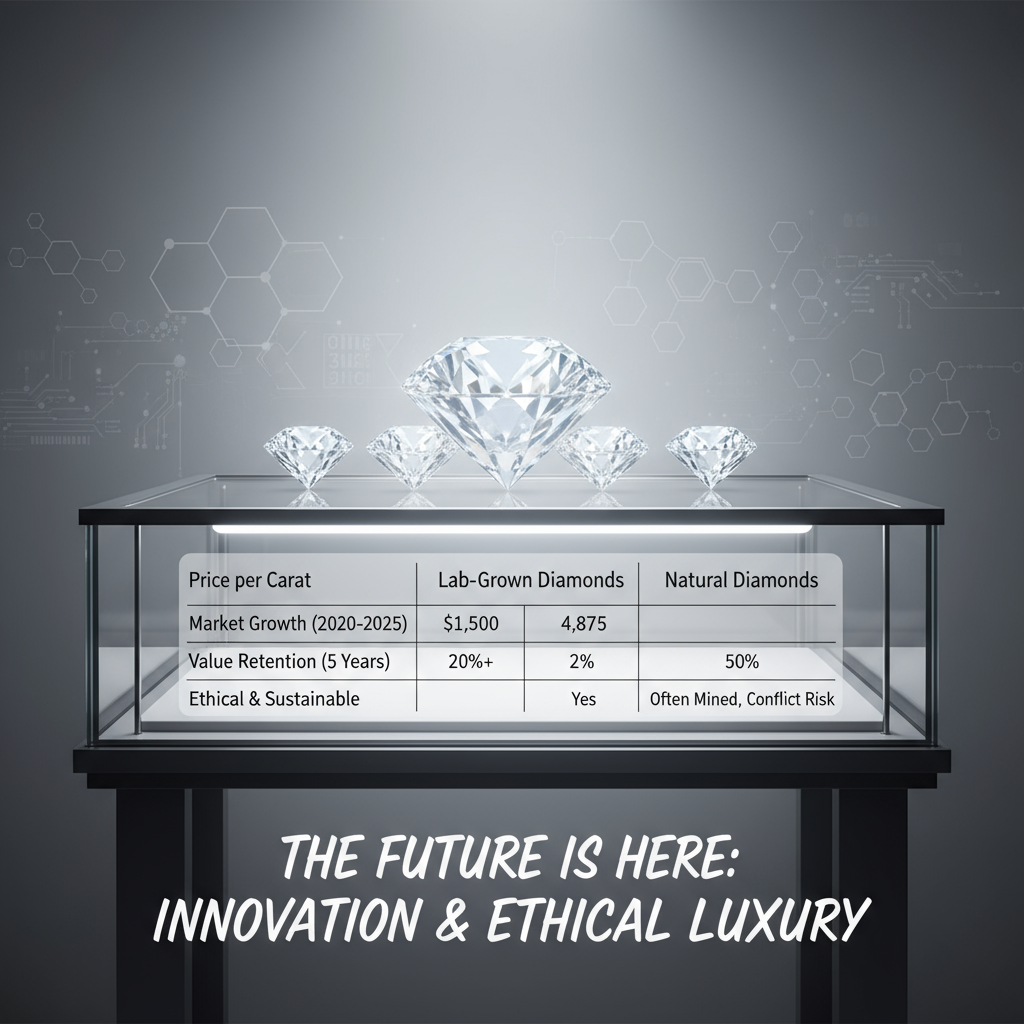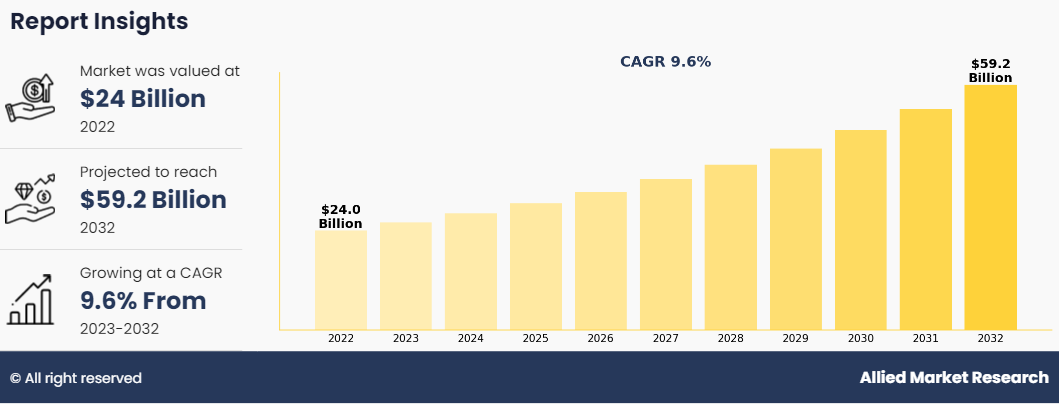
Lab-Grown Diamonds Market Growth, Pricing, and Industry Impact in 2024
The jewelry industry is rapidly transforming due to the rise of lab-grown diamonds, created using advanced technologies like Chemical Vapor Deposition (CVD). Valued at around $26–27 billion in 2024 and projected to exceed $97 billion by 2034, this market is propelled by millennial and Gen Z consumers who prioritize sustainability, affordability, and ethical sourcing. Lab-grown diamonds are significantly more affordable than natural ones—averaging $1,500 per carat in 2025 compared to $4,875—and often surpass natural diamonds in clarity and quality. As these gems gain acceptance from major brands and celebrities, they challenge traditional concepts of luxury by emphasizing ethical production and environmental responsibility. Expected to capture 10% of the global diamond market by 2030, lab-grown diamonds are reshaping consumer preferences and setting new standards for luxury in the jewelry industry.Summary
Title: The Rise of Lab-Grown Diamonds: Transforming the Jewelry Industry
Introduction
The jewelry industry is undergoing a significant transformation, driven by the burgeoning market for lab-grown diamonds. These synthetic gems, created through advanced technologies like Chemical Vapor Deposition (CVD), are not only reshaping consumer preferences but also redefining what luxury and value mean in the diamond market. This article explores the growth, pricing dynamics, and the broader implications of lab-grown diamonds in today's eco-conscious and value-driven market.
Market Growth and Industry Impact
The lab-grown diamond market has experienced remarkable growth, estimated at $26–27 billion in 2024, with projections to reach $30 billion in 2025 and potentially exceed $97 billion by 2034 at a CAGR of over 14%. This surge is largely driven by millennial and Gen Z consumers who prioritize sustainability, affordability, and ethical sourcing. Specifically, the CVD lab-grown diamond segment is expected to grow from $13.8 billion in 2025 to $20 billion by 2029. This growth underscores the shift towards ethical jewelry, as these consumers view lab-grown diamonds as a responsible choice, aligning with their values.
Price Per Carat: Lab-Grown vs. Natural Diamonds
One of the most compelling aspects of lab-grown diamonds is their dramatic price decline compared to natural diamonds. Initially 30% cheaper in 2015, lab-grown diamonds became 50–60% cheaper by 2020, and by 2025, they are 80–85% more affordable, with prices averaging at $1,500 per carat versus $4,875 for mined diamonds. This affordability is facilitated by improved manufacturing technologies and increased production in countries like China and India. However, this also brings into question the value retention of lab-grown diamonds, which do not hold their value as well as natural stones, retaining only a fraction of their initial price.
Challenging Traditional Views on Luxury, Beauty, and Value
Lab-grown diamonds, being chemically and physically identical to natural diamonds, are challenging traditional notions of luxury. The concept of luxury has shifted from scarcity to ethical sourcing and craftsmanship. With advancements in AI and manufacturing technology, lab-grown diamonds now offer superior clarity, cut, and color consistency, often surpassing mined diamonds in quality. Their appeal is further enhanced by their minimal environmental impact and ethical production, resonating with the sustainability preferences of Gen Z and millennials. Moreover, market acceptance has grown, with celebrities and major brands endorsing lab-grown diamonds, broadening their appeal beyond engagement rings to all jewelry categories.
Gemstone Economy and the Future
Looking forward, lab-grown diamonds are expected to capture 10% of the global diamond market share by 2030. Their utility extends into industrial applications, leveraging their superior physical properties. However, while they offer significant consumer value through affordability, buyers should be mindful of their lower resale value compared to natural diamonds, which maintain a more stable asset value.
Summary Table: Lab-Grown vs. Natural Diamonds (2025)
| Feature | Lab-Grown Diamonds | Natural Diamonds | |-------------------------|---------------------------|---------------------------| | Price per carat | ~$1,500 | ~$4,875 | | Market growth (CAGR) | 14%+ (2025–2034) | Slower, more stable | | Value retention | Lower | Higher (~50% retained) | | Ethics & Sustainability | High | Variable, often lower | | Physical properties | Identical | Identical | | Market share | Growing rapidly (~10% by 2030) | Dominant, but declining |
Conclusion
Lab-grown diamonds are not merely an alternative but are setting new standards in the jewelry industry. Their rise reflects a broader shift towards sustainable diamonds and ethical jewelry, influenced by the preferences of millennial consumers and Gen Z. As we move forward, the integration of lab-grown diamonds into both luxury and everyday jewelry signifies a profound change in consumer behavior, market dynamics, and the environmental impact of the diamond industry. This evolution challenges traditional views while offering a glimpse into a future where technology and ethics redefine luxury.

Frequently Asked Questions
Q: what are lab-grown diamonds
A: Lab-grown diamonds are real diamonds created in controlled laboratory environments using advanced technological processes that simulate the natural conditions under which diamonds form within the Earth. These diamonds have the same physical, chemical, and optical properties as mined diamonds but are typically more affordable and considered more sustainable due to their reduced environmental impact. Lab-grown diamonds can be used for jewelry and industrial applications just like natural diamonds.
Q: difference between lab-grown and natural diamonds
A: Lab-grown diamonds are created in controlled laboratory environments using advanced technological processes that replicate the conditions under which natural diamonds form. Natural diamonds develop over millions of years beneath the Earth's surface through geological processes. Chemically and physically, both types of diamonds are virtually identical, but lab-grown diamonds typically cost less and have a smaller environmental impact compared to natural diamonds.
Q: price trends for lab-grown diamonds
A: Lab-grown diamond prices have generally been decreasing over the past decade due to improvements in production technology, increased supply, and growing consumer acceptance. Initially, lab-grown diamonds were priced significantly lower than natural diamonds, and this price gap has often widened as more producers enter the market. However, prices can vary depending on diamond quality, size, and market demand. Overall, the trend points to more affordable lab-grown diamonds compared to their mined counterparts, making them an attractive option for budget-conscious buyers.
Q: impact of lab-grown diamonds on jewelry market
A: Lab-grown diamonds have significantly impacted the jewelry market by offering a more affordable and ethically sourced alternative to natural diamonds. Their lower price point allows consumers to purchase larger or higher-quality stones for the same budget, increasing accessibility. Additionally, growing demand for sustainable and conflict-free products has boosted the popularity of lab-grown diamonds, prompting traditional jewelers to adapt their offerings. This shift is reshaping market dynamics, influencing pricing, and expanding consumer choices in the industry.
Q: where to buy lab-grown diamonds in Manhattan
A: In Manhattan, you can purchase lab-grown diamonds at several jewelry stores specializing in ethical and modern diamond options. Popular places include branded retailers like Brilliant Earth and Clean Origin, as well as local jewelers in the Diamond District on 47th Street who now offer lab-grown options. Additionally, some upscale department stores and online retailers with showrooms in Manhattan allow you to view and buy lab-grown diamonds in person. It's advisable to check store inventories online or call ahead to ensure availability.
Key Entities
Midtown Manhattan Diamond District: The Midtown Manhattan Diamond District is a renowned commercial area in New York City specializing in the trade of diamonds and fine jewelry. It serves as a central hub for diamond dealers, appraisers, and wholesalers, including those involved in lab-grown diamonds.
Suzy Weiss: Suzy Weiss is a journalist specializing in jewelry and gemstone industry topics. She provides insights into trends such as the rise of lab-grown diamonds within the diamond trade.
Jutharat Pinyodoonyachet: Jutharat Pinyodoonyachet is an industry expert known for her knowledge of both natural and lab-grown diamonds. Her expertise contributes to understanding market dynamics in the diamond sector.
lab-grown diamonds: Lab-grown diamonds are synthetic gems created using technological processes that replicate natural diamond formation. They have gained growing acceptance in the jewelry industry and the Midtown Manhattan Diamond District as alternatives to mined diamonds.
External articles
- Laboratory-Grown Diamond Trends | GIA Research
- Lab Grown Diamond Market Size, Share, Trends
- Lab-Grown Diamonds Boom: Is It Game Over For Mined ...
Related Articles
- Kristian Berg Harpviken Named Director of Norwegian Nobel Institute: Shaping the Future of the Nobel Peace Prize
- The Norwegian Parliament Opens with Royal Tradition Amid Political Shifts Following 2025 Election
- Norwegian Government Cancels Stad Ship Tunnel Project Amid Rising Costs
YouTube Video
Title: Comparing Natural vs. Lab Grown Diamond Prices 
URL: https://www.youtube.com/shorts/omdg7N9Pppo
News